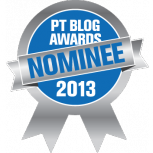 This past week, I gave a 3 hour presentation at the Texas Physical Therapy Association’s Annual Conference – my third consecutive appearance at our annual meeting. The presentation was entitled “Mechanisms Of Therapeutic Exercise Progression”.
This past week, I gave a 3 hour presentation at the Texas Physical Therapy Association’s Annual Conference – my third consecutive appearance at our annual meeting. The presentation was entitled “Mechanisms Of Therapeutic Exercise Progression”.
Exercise – and the parameters required to optimize the responses to it – is a large part of my daily world. Whether it is a program for injury recovery, injury prevention, or performance optimization, the parameters and dosage of exercise are critical. They are intimately related to whether or not we “turn on the gene” – or don’t.
The problem is that the application of therapeutic exercise, in my humble opinion, is a little behind the curve relative to what we actually know takes place at the cellular level. I see this problem with personal trainers, physical therapists, physical therapist assistants, chiropractors, and even physicians.
Apparently it is a topic that the physical therapy community in Texas is interested in. My session was very well-attended, with over 55 participants in a standing-room-only meeting room.
This session was organized to provide information on the cellular mechanisms underlying therapeutic exercise, and to discuss the appropriate application of these mechanisms for effective exercise progression. It was also to dispel some of the myths and trends currently in vogue. I see far too many outdated “protocol-driven” exercise strategies on both ends of the health spectrum. Good cellular physiology research is readily available, yet poorly implement. Ultimately, patients suffer with slower rates of progression.
The session was notable in that the audience was very diverse clinically. There was a mix of both clinicians and students, PT and PTA alike. The group included not only orthopedic therapists, but also those treating neurological conditions, wound care, and pediatrics. I was pleasantly surprised at the diversity of the group. It is good to see a broad-ranging interest in sound exercise principles that are applicable to all populations. This mix of clinicians created some great questions and interaction about a topic that is critical to our profession.
Download the presentation on SlideShare and Scribd, or a PDF of the presentation here. A PDF of the complete reference list can be found here.
If there are any questions about the materials, feel free to send me an email or leave a note in the comments section.
Photo credits: joehardy

 "Running Injuries: Etiology And Recovery- Based Treatment" (co-author Bridget Clark, PT) appears in the third edition and fourth editions of "Clinical Orthopaedic Rehabilitation: A Team Approach" by Charles Giangarra, MD and Robert C. Manske, PT.
"Running Injuries: Etiology And Recovery- Based Treatment" (co-author Bridget Clark, PT) appears in the third edition and fourth editions of "Clinical Orthopaedic Rehabilitation: A Team Approach" by Charles Giangarra, MD and Robert C. Manske, PT.
 Allan Besselink, PT, DPT, Ph.D., Dip.MDT has a unique voice in the world of sports, education, and health care. Read more about Allan here.
Allan Besselink, PT, DPT, Ph.D., Dip.MDT has a unique voice in the world of sports, education, and health care. Read more about Allan here.
 Top 5 finalist in three categories: "Best Overall Blog", "Best PT Blog" and "Best Advocacy Blog".
Top 5 finalist in three categories: "Best Overall Blog", "Best PT Blog" and "Best Advocacy Blog".